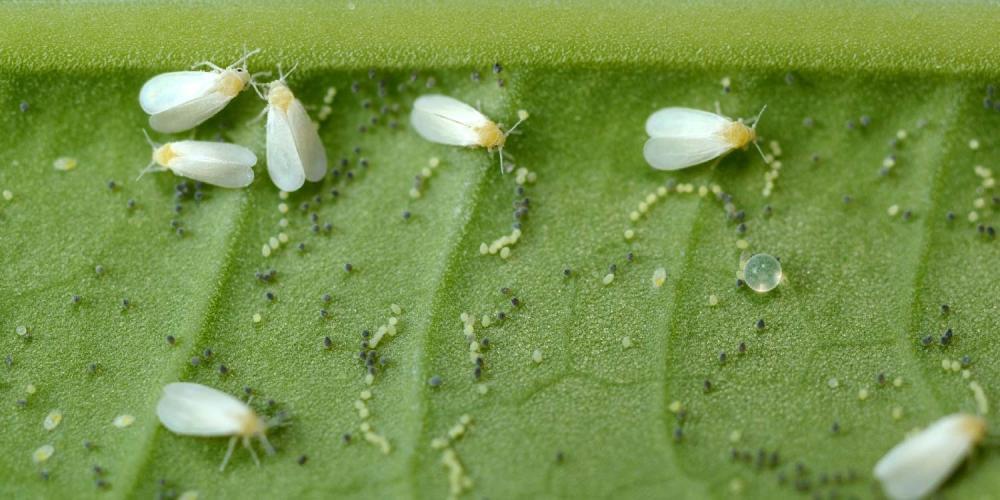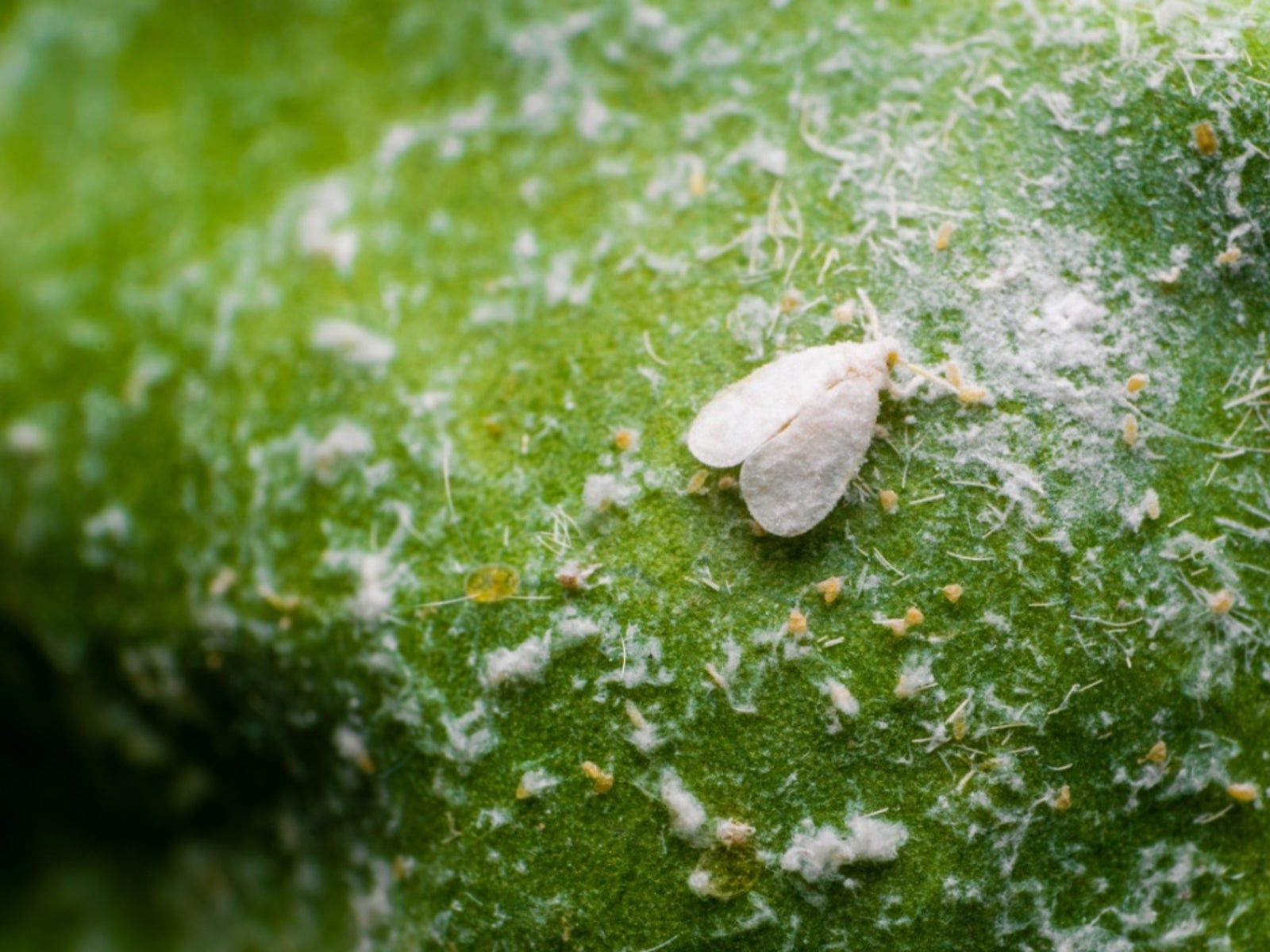
- The whitefly is a highly dangerous insect pest to agricultural crops, especially in greenhouses and exposed vegetable gardens. Despite its small size, measuring no more than 1–2 mm, it reproduces rapidly, forming dense colonies on the underside of leaves. Its sulfur-yellow body and white wings are covered with a waxy coating, giving it additional resistance to some pesticides.
- This insect relies on sucking plant sap, leading to poor growth, yellowing, and leaf drop. However, the greatest threat lies in the secretion of a sugar-rich honeydew that causes the growth of black mold that covers leaves and fruits, reducing crop quality and marketability. In addition, the whitefly is a major vector of viral diseases such as tomato leaf curl virus (TYLCV) , which causes significant production losses.
- Its ability to reproduce rapidly (with a female laying up to 200 eggs) and produce overlapping generations within a single season makes it extremely difficult to control, necessitating an Integrated Pest Management (IPM) program that combines prevention, chemical and biological control.

Symptoms of infection
- 🌱 Gradual yellowing of leaves and poor growth.
- 🍂 Wilting and leaf drop in severe cases.
- 🍯 Honeydew appears on leaves and fruits, followed by black mold growth.
- 🦠 Transmission of dangerous viruses that lead to stunted plant growth and poor production.
- 🪰 Notice small swarms of white insects when shaking the plant.
- 🌾 The most affected crops
- 🍅 Tomatoes.
- 🌶️ Pepper.
- 🥒 Cucumber and zucchini.
- 🧅 Onions and garlic.
- 🍓 Strawberries.
- 🌻 Flowering plants and roses.
Whitefly life cycle
- Eggs: Laid on the underside of leaves, the female may lay up to 200 eggs .
- Nymphs: They start as crawling nymphs of 0.3 mm length, then enter dormant stages that suck sap.
- Pupa: a dormant stage that precedes the emergence of the adult insect.
- Adult insect: 1–2 mm long, begins to reproduce immediately.
- ⏳ The full cycle takes:
- In summer: 15–25 days.
- In winter: it may extend up to 100 days.
economic damage
- Direct losses due to absorption of plant sap.
- Indirect losses due to virus transmission.
- Fruits become deformed by black mold and lose their marketing value.
- Difficulty in control due to overlapping generations and high reproductive rate.
Prevention methods
- 🌿 Removing weeds, which are a natural host for whiteflies.
- 🪟 Installation of tight mesh for greenhouses.
- 🪰 Use yellow sticky traps to monitor and track infestations.
- 🌸 Plant less sensitive varieties when available.
- 💧 Moderation in watering and nitrogen fertilization.
Active ingredients to combat whiteflies
- Imidacloprid: 0.25–0.5 ml per 1 liter of water – repeated every 14 days.
- Thiamethoxam: 0.3–0.6 ml per 1 liter of water – repeat every 14 days.
- Acetamiprid: 0.3–0.5 ml per 1 liter of water – repeated every 14 days.
- Buprofezin: 0.5–0.75 g per 1 liter of water – repeated every 10–14 days.
- Pirimiphos-methyl: 0.5–1 ml per 1 liter of water – repeat every 14 days.
Practical tips for farmers
- Focus on the underside of the leaves when spraying because this is where the insect gathers.
- Start control early before dense colonies form.
- Alternate active ingredients to avoid resistance.
- Combine agricultural methods (netting + weeding + traps) with pesticides to achieve the best results.

